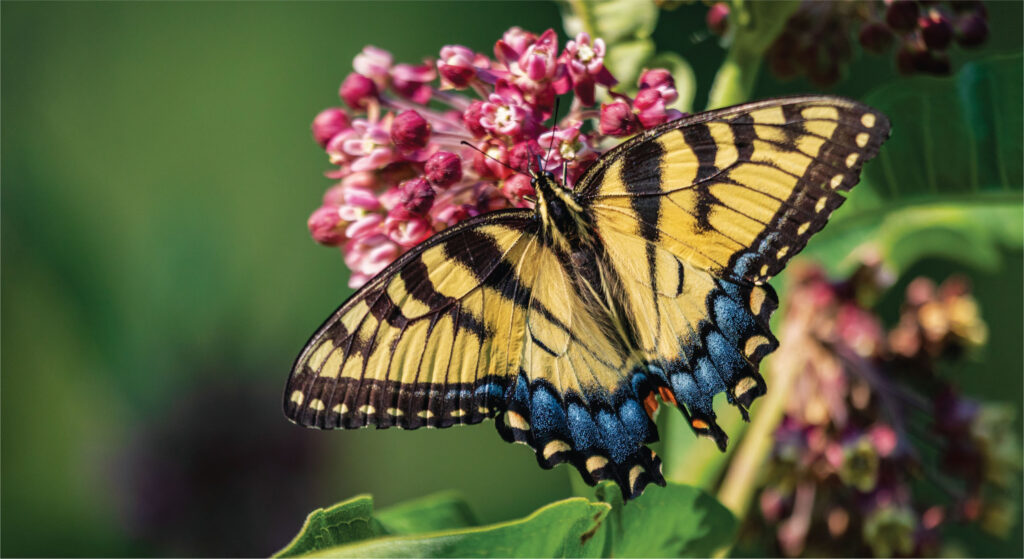“We delight in the beauty of the butterfly but rarely admit the changes it has gone through to achieve that beauty.” — Maya Angelou
Flitting about the landscape from flower to flower, butterflies add an air of wonderment, freedom and artistry to the landscape. Their life cycle from egg, caterpillar, chrysalis and then to adult is an amazing transformation few creatures go through on planet Earth.
The life cycle of Eastern tiger swallowtail spans only six to 10 weeks from egg to adult with the adult butterfly stage lasting only about two weeks. As you can see, this specimen is beginning to show wear and tear on its wings and is missing its name-sake tails.
I found it feeding on the nectar of individual blooms in a patch of milkweed at Radnor Lake State Park. Milkweed is a favorite plant for several varieties of moths and butterflies, including monarchs and swallowtails.
These beautiful winged insects rely on specific plants and habitats to support their life cycle. In Tennessee, several native plants and trees are beneficial to butterflies and moths.
Milkweed, butterfly bush, lilac, phlox, ironweed, coneflowers and wild cherry are a few of the flowering plants that attract butterflies to their nectar. Where you find these plants, you will find several varieties of butterflies from spring through early fall in Tennessee.
Butterflies are struggling across the country to survive loss of habitat, a warming climate and application of insecticides. If you have the space and a green thumb, creating a pollinator-friendly space in your yard or garden will help to increase their survival rates and your opportunities of seeing and photographing a variety of beautiful butterflies.
Once you find them, capturing a sharp photograph of an adult butterfly isn’t easy, but it can be done. Using autofocus, a longer zoom lens and a fast shutter speed will help you get closer to your subject and freeze the action of the frenetic flight and movement.
Observing their movement can help you predict where they might land next and allow you to prepare for the shot. Using a long zoom will also help to isolate the subject from the background, focusing your viewer’s attention on the subject.
To find out more about attracting or raising butterflies and their habitats, check out the North American Butterfly Association website at naba.org.




